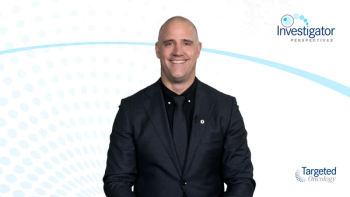
JAK Inhibitor Selection Strategy: Risk-Guided Approach and Treatment Goals for Splenomegaly and Anemia
Panelists discuss how risk stratification, symptom burden, and splenomegaly guide treatment decisions for a 68-year-old woman with intermediate-risk myelofibrosis who isn’t interested in transplant.
Episodes in this series

In this segment, Pankit Vachhani, MD, from the University of Alabama, and Raajit Rampal, MD, from Memorial Sloan Kettering Cancer Center, discuss a case of intermediate-risk myelofibrosis in a 68-year-old woman. The patient presents with fatigue, splenomegaly (6-7 cm below left costal margin), hemoglobin of 9.7, white blood cell count of 23, platelets of 450, and JAK2 V617F mutation. Risk stratification using DIPSS and MIPSS70 version 2.0 categorizes her as having intermediate-risk myelofibrosis, and she is not interested in transplant.
Dr. Rampal emphasizes that treatment goals should focus on both longevity and quality of life. While transplant might benefit long-term outcomes for intermediate-risk disease, the patient’s stance against transplant is reasonable given the associated risks. The experts discuss the decision to treat, with Dr Rampal suggesting that JAK inhibitors would be standard of care to improve symptom burden and reduce spleen size. He notes that opinion might be divided among experts about whether to initiate treatment at this stage.
Dr. Vachhani highlights that risk stratification tools like DIPSS and molecularly-inspired tools like MIPSS70 version 2.0 are important prognostic indicators but should not solely determine treatment decisions. He emphasizes that treatments should aim to alleviate symptoms, decrease splenomegaly, and potentially improve survival outcomes, rather than being strictly determined by risk category. The experts agree that symptomatic patients with splenomegaly could benefit from treatment regardless of their risk stratification score.










































